The opinions and views expressed in this article are those of the author and do not reflect the opinion of Byte or Byte's editorial board.
It was just this past summer when I was finally goaded into playing Persona 5 Royal by a friend. At first, I was apprehensive about the turn-based combat and the possibility of an anime trope-filled narrative. However, after getting past the game’s first dungeon, I was already hooked. By the end of my 120 hour-long journey in the shoes of the leader of the Phantom Thieves of Hearts, I was clamoring for more from the world of Persona. This led me to playing Persona 4 Golden, which I enjoyed just as much - if not more. However, I had refrained from touching Persona 3, as I had just seen the announcement of the upcoming remake: Persona 3 Reload. That day has come now, and Persona 3 Reload has certainly not disappointed me.
What’s old is new…
The original Persona 3 was released in 2006 for the PlayStation 2. However, the most readily available version of the game prior to Reload was Persona 3 Portable: a port of the game originally made for the PlayStation Portable in 2009. Although this version of the game had some new innovations such as controllable party members and the option to play as a female protagonist, the game suffered from its original hardware limitations, forcing players to witness any non-combat gameplay sections as a visual novel. As you can imagine, this had the potential to take away from some of the emotional impact of the game’s most critical moments. Despite the datedness of any of the prior forms of the game, Persona 3 is known for setting the formula that is used in the series' mainstream entries to this day. The school calendar structure, Social Links, and life-to-combat dichotomies are all features that were introduced to the series in Persona 3 that are quintessential to the series now.
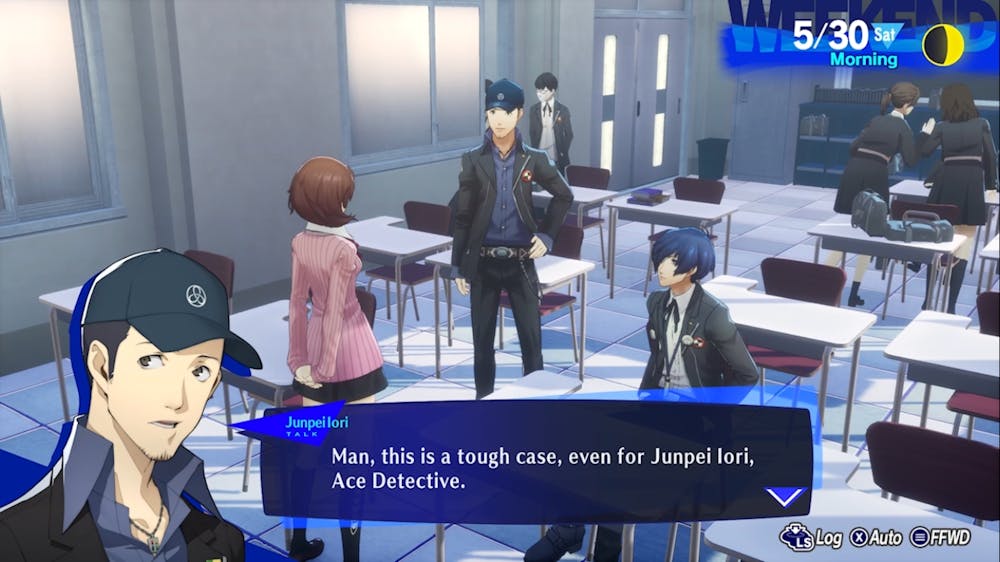
All of this weight may seem like a hard task to bring to the current generation, but Persona 3 Reload does this with ease, bringing areas to life with new high-resolution visuals and more depth and details than ever before. The game sports a soundtrack with both new and revised original tracks to listen to throughout the course of the game, with Atsushi Kitajoh taking the helm as composer. Almost all of the major characters have been recast as well, with Aleks Le voicing the main protagonist. Social Link dialogue is now fully voiced, and teammates now give voice lines while exploring the game’s dungeon, Tartarus. Overall, the newer touches to the game really make it feel like a worthy upgrade from the past versions of the game, while keeping the core vision intact.
Seize the day, S.E.E.S. the night
Persona 3 Reload’s gameplay is divided up into two parts: the “social simulator,” in which your character performs normal actions throughout the day such as going to school, hanging out with friends, and going out to eat; and the “dungeon crawling,” which takes place exclusively at night. During the social simulator sections, the player can level up their Social Links, which are relationships with specific named characters. Over the course of multiple interactions across various days, each character will undergo a story arc with the protagonist. Many of these Social Link stories are quite compelling, including contemplating life alongside a terminally ill man, and consoling an elementary school student regarding her parents’ divorce. An issue I have with many of these Social Links, however, is how backloaded they are. Many of these side stories spend their early chapters meandering with character setup, which can mislead players into a false perception of each of these characters’ stories. Alongside Social Link stories, players can partake in activities that raise their social stats: Charm, Academics, and Courage. Raising these attributes allows the player to gain access to different areas around town, as well as begin certain Social Links. Some of these activities can even be performed with fellow teammates, giving you more insight into their character. These activities add some much appreciated charm to the game’s world, even if they aren’t all that involved.
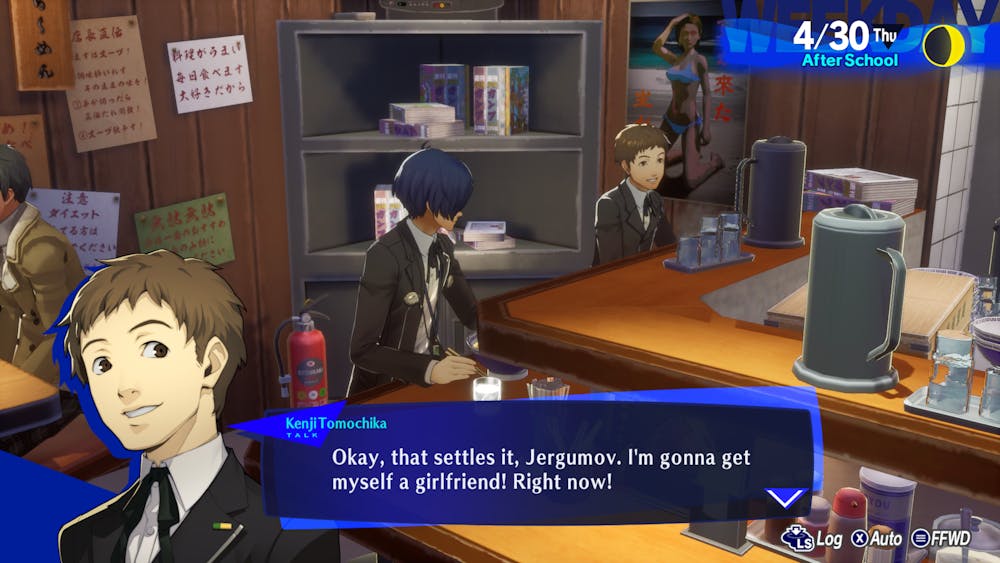
The other half of the game takes place at night, during the Dark Hour. When midnight strikes, time freezes, and a grotesque tower emerges from the location of your high school. This is where the game’s combat and dungeon crawling takes place. This tower, Tartarus, consists of a bunch of procedurally generated floors filled with enemies to battle and items to loot, with some specifically designed floors to break up the blocks with mini bosses or time-gated barriers. This design philosophy is not quite as strong as actually designed levels, as running through areas that often feel copied and pasted can get monotonous if you spend too long climbing Tartarus’ floors. However, the game still manages to keep things pretty fresh at times with some changes of scenery every few blocks, and some gimmick floors that may change enemy behavior or the way you approach traversal. For instance, one of the rare floors shrouds the entire area in darkness whilst providing slightly better loot. Enemies won’t automatically detect you on this floor, so you can search out valuables without alarm, but a powerful endgame boss will quickly spawn, so it is best to be fast with a clear of this floor, especially on lower levels.
Persona 3 Reload’s combat is turn-based, allowing each party member a turn and then allowing the enemies to attack. In classic Persona fashion, targeting an enemy's weakness with a matching element will knock that enemy down and allow for you to gain an extra turn on that party member. Knock every enemy down, and you get the opportunity to perform an all-out attack that could finish the battle then and there. Persona 5’s “Baton Pass'' system returns, now called shift, allowing for you to pass your extra turn to a different party member. This makes combat flow very well, as you can chain to different characters to target different weaknesses without the risk of allowing an enemy to take their turn. Persona 3 Reload also introduces a new kind of attack called the “Theurgy.” These special attacks are charged during battle based on certain actions for each character and allow that character to unleash an extremely potent skill, such as doing massive amounts of damage or buffing the entire party’s next attack. All of these features make Persona 3 Reload’s combat some of the most satisfying in series history.
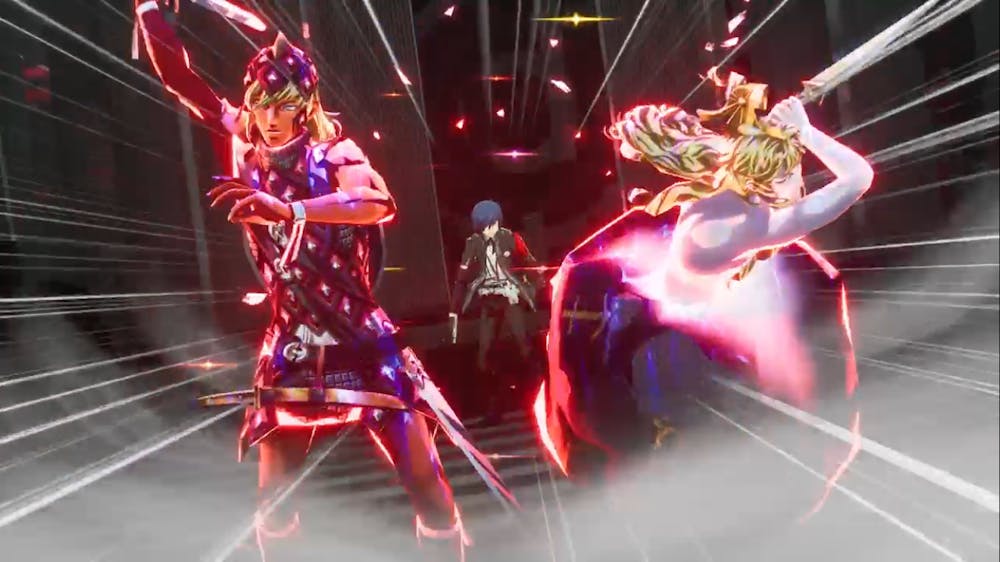
Another crucial aspect of Persona 3 Reload’s gameplay is, well, the titular Personas themselves. For those unaware, Personas are manifestations of one’s subconscious that manifest in combat to aid the party members. While each of the party members are each stuck with a single Persona that cements their role in combat, the protagonist is free to hold a stock of Personas to swap between in battle, as well as the ability to fuse two or more Personas into an even more powerful Persona. This fusion system is an essential part of constructing a build that can absolutely steamroll fights with creative combinations of skills and traits. However, there are incentives to do so outside of the inherent power of an individual persona. Some Personas will grant you a special item upon reaching a certain level, which will allow you to use said item to craft powerful gear at a location in the overworld. Fusing certain Personas can also unlock new Theurgies, some of which are uniquely powerful. With all this incentive to try new Personas, I always found myself coming back to the Velvet Room to fuse something new.
The Greek Tragedy
Despite the well-refined gameplay, my favorite part of Persona 3 Reload is easily its story. The protagonist, an orphan with a name of your choosing, arrives in a new town to attend Gekkoukan High School. However, some strange things are afoot. Odd appearances are happening at night, and people are falling ill with a strange condition known as “Apathy Syndrome,” which causes people to go catatonic. Eventually, your dormitory is attacked by a strange monster, and you awaken to your Persona. From there, you learn about the Dark Hour, a period when time freezes between one day and the next, and monsters called Shadows roam free, unbeknownst to the general public. To fight these monsters and seek an end to the Dark Hour, you must join the Specialized Extracurricular Execution Squad (or SEES for short) and delve into Tartarus to investigate the source of this darkness.
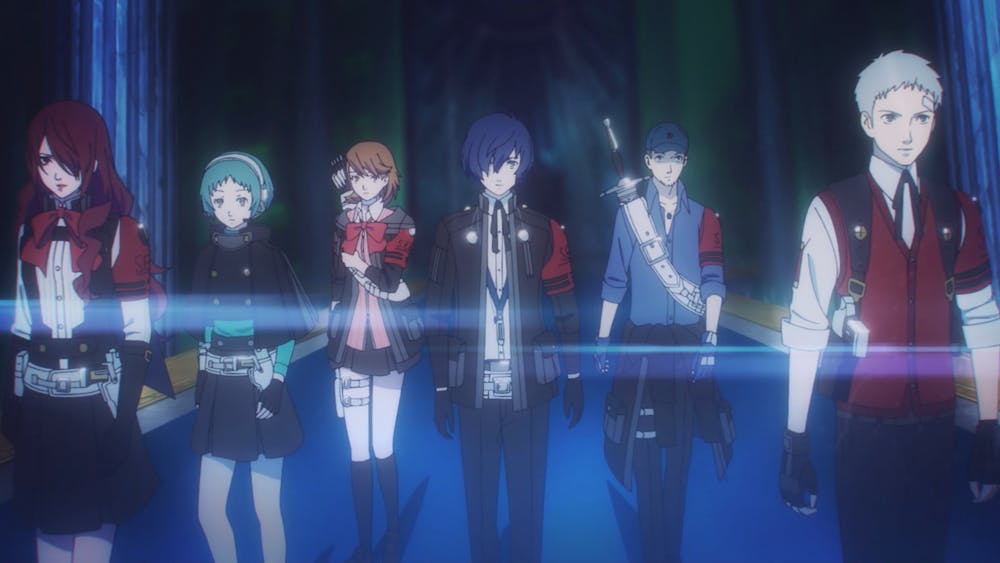
This premise is quite solid, providing an intriguing mystery to follow you throughout the game’s lengthy narrative. This story is accentuated by compelling twists, heartfelt relationships, and plenty of smaller mysteries to uncover. However, what really sets Persona 3 Reload’s story apart is its complex themes regarding life and death. There are many points in the story in which it may seem that hope is lost for some characters, and almost every main character gets their fair share of trauma. Antagonistic forces in the game preach nihilism, praising the rise of Apathy Syndrome for making people realize that nothing in life matters, and that they should simply embrace death. However, Persona 3 Reload masterfully combats these nihilistic ideas by confronting them head on. Yes, tomorrow isn’t guaranteed, but that doesn’t mean people should instantly lose hope. Instead, Persona 3 Reload suggests that what matters isn’t how much time you have, but how you spend that time that matters. Human connection is central to the game’s narrative themes, and the game’s slow burn really makes that apparent. By having the player live out a daily life, you slowly become attached and familiar with the city and people in it. This all culminates in the game’s last few months, which I won’t elaborate on any further due to major story spoilers.
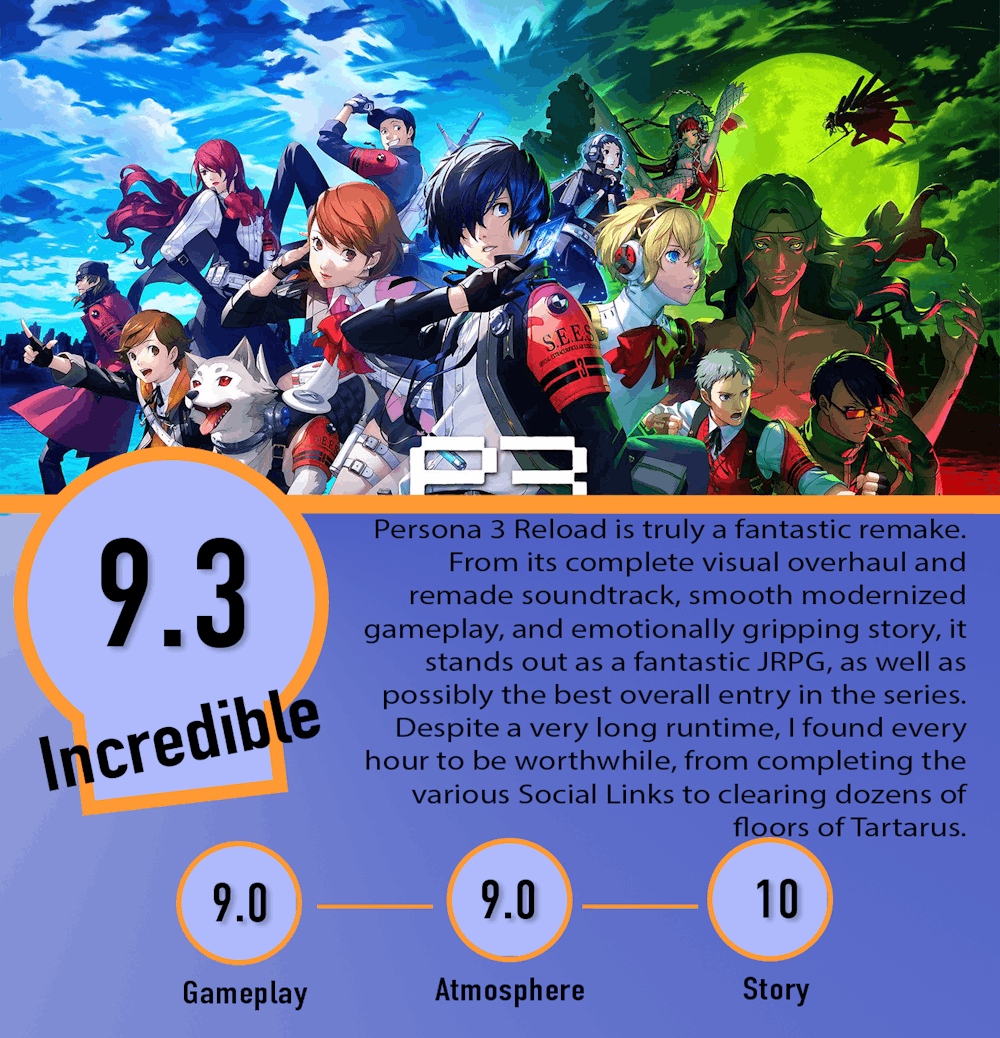
Sources:
Persona 5, Persona 4, Persona 3 Reload, megamitensei, IMDb
Photos are all In-Game screenshots
Contact Ian Case with comments at ian.case@bsu.edu



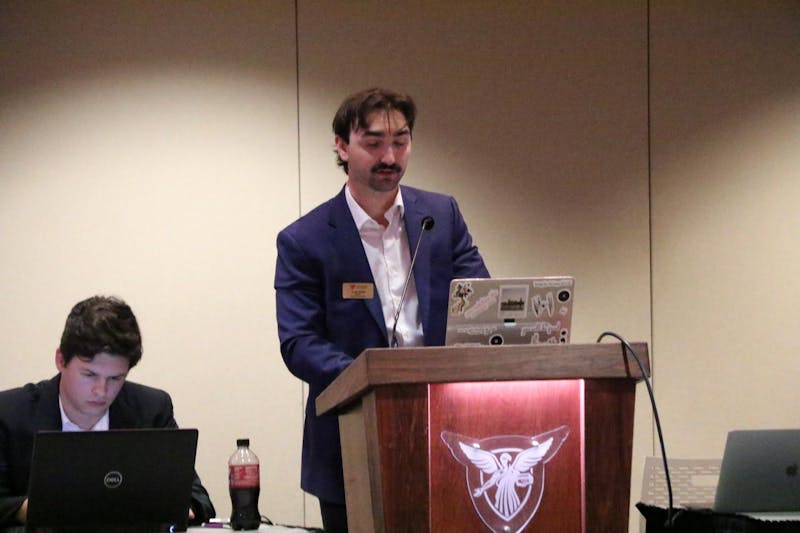

The Daily News welcomes thoughtful discussion on all of our stories, but please keep comments civil and on-topic. Read our full guidelines here.